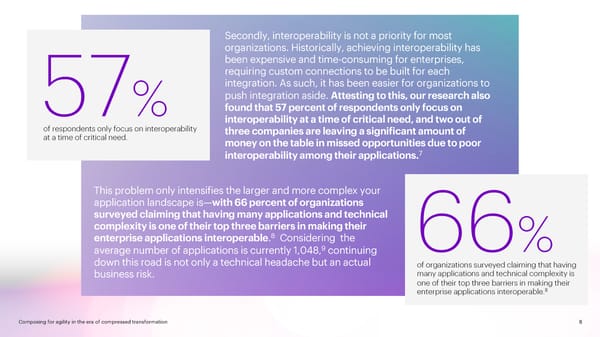Secondly, interoperability is not a priority for most organizations. Historically, achieving interoperability has been expensive and time-consuming for enterprises, requiring custom connections to be built for each integration. As such, it has been easier for organizations to push integration aside. Attesting to this, our research also 57% found that 57 percent of respondents only focus on interoperability at a time of critical need, and two out of of respondents only focus on interoperability three companies are leaving a significant amount of at a time of critical need. money on the table in missed opportunities due to poor 7 interoperability among their applications. This problem only intensifies the larger and more complex your application landscape is—with 66 percent of organizations surveyed claiming that having many applications and technical complexity is one of their top three barriers in making their 8 enterprise applications interoperable. Considering the average number of applications is currently 1,048,9continuing 66% down this road is not only a technical headache but an actual of organizations surveyed claiming that having business risk. many applications and technical complexity is one of their top three barriers in making their 8 enterprise applications interoperable. Composing for agility in the era of compressed transformation 8
 Composing for agility in the era of compressed transformation Page 7 Page 9
Composing for agility in the era of compressed transformation Page 7 Page 9